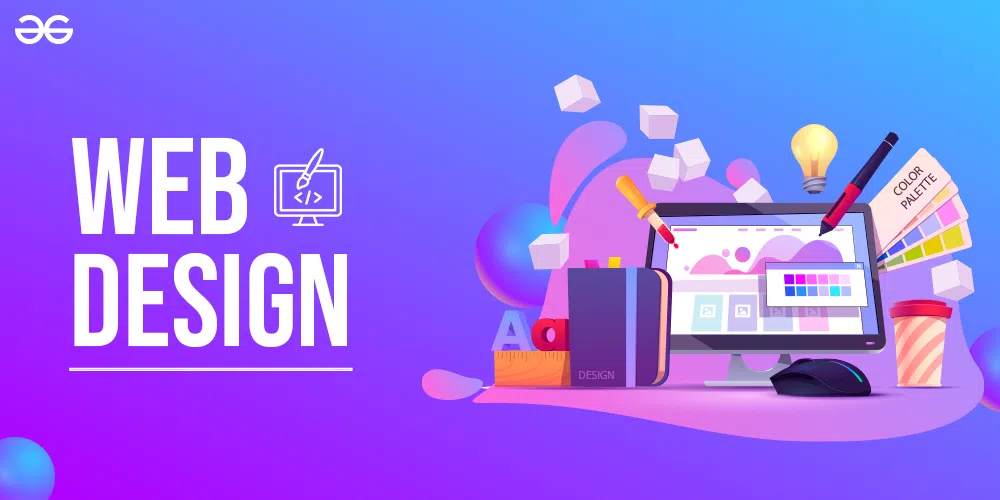Master the Art of Website Design With These Specialist Tips and Tricks
In today's electronic age, having a properly designed and aesthetically attractive web site is essential for any kind of business or private looking to make a mark online. In this discussion, we will certainly discover expert ideas and tricks that will not only enhance the visual appeal of your website however likewise boost its functionality and performance. From selecting the ideal color combination to incorporating reliable call-to-actions, these understandings will certainly assist you produce an internet site that not only mesmerizes your audience but likewise drives outcomes.
Choosing the Right Shade Palette
When picking a color scheme for website design, it is important to take into consideration variables such as brand identity, target audience, and overall visual objectives. The shades utilized in an internet site can substantially affect just how individuals engage and regard with the website. It is essential to select shades that straighten with the brand name's identification and worths. For example, a technology business may choose a sleek and modern shade combination, while a kids's brand name may select intense and spirited colors.
Along with brand identity, the target market need to additionally be taken into account when choosing a shade palette. Various age and demographics may respond differently to specific shades. More youthful audiences may be more drawn in to vivid and vibrant shades, while older audiences may favor extra low-key and advanced tones. Recognizing the choices and assumptions of the target market can aid produce a visually enticing and engaging internet site.
Finally, the total visual goals of the web site must be thought about when picking a shade combination. The color design ought to enhance the total design and format of the website, creating a cohesive and aesthetically enticing experience for individuals. Whether the objective is to create a serene and soothing setting or an energised and dynamic atmosphere, the shade scheme must be meticulously selected to achieve the wanted aesthetic.

Creating User-Friendly Navigation
To enhance the individual experience, it is necessary to establish easy-to-navigate and intuitive menus for sites. User-friendly navigating is critical for guiding visitors with the various sections and web pages of a site, allowing them to quickly locate the material they are searching for. When making the navigating menu, simpleness is vital. Prevent cluttering the food selection with a lot of options, as this can bewilder users and make it challenging for them to make choices. Rather, emphasis on giving clear and succinct labels for each food selection thing, using acquainted terms that customers can easily recognize.

In addition to clear tags and rational company, it is vital to make the navigation menu conveniently available. Position it in a noticeable area, such as on top of the page or in a set setting, so that users can easily locate and access it from anywhere on the web site. Consider using a responsive design technique to make sure that the navigating menu continues to be easily accessible and functional on different devices, consisting of smart phones and tablets.
Including Receptive Design Techniques
In order to enhance site performance across various devices, incorporating receptive design techniques is necessary. Responsive design is a web style method that permits websites to respond and adapt to different screen dimensions and alignments. With the increasing usage of tablet computers and mobile phones, it is essential for internet designers to create websites that supply an ideal watching experience for individuals on all tools.
Among the key strategies in receptive style is using fluid grids. Rather than making fixed-width designs, web designers develop adaptable grids that resize and readjust based on the screen size. This guarantees that the content on the internet site stays readable and accessible, no matter the device being made use of.
Another vital method is using adaptable pictures and media. By setting the maximum size of photos and videos to 100%, they will instantly reduce to fit smaller displays. This prevents images from being reduced off or misshaped on mobile devices.
Furthermore, responsive layout includes using media inquiries to use various designs and layouts based upon the gadget's display dimension. This enables internet designers to develop a seamless experience by personalizing the discussion of content according to the gadget being made use of.
Optimizing Web Site Speed and Performance
One vital aspect of internet layout is optimizing website speed and performance. In today's hectic digital world, individuals have little patience for slow-loading sites. A sluggish site can lead to an inadequate customer experience, high bounce site here prices, and reduced search engine positions. To make certain that your internet site does at its finest, there are several techniques you can carry out.
To start with, optimizing photos is essential for boosting website rate. Pictures must be effectively compressed and resized to minimize their data size without sacrificing high quality. This can be done making use of image optimization tools or plugins.
One more crucial aspect to think about is site caching. Caching involves saving static variations of website to make sure that they can be rapidly recovered rather than generating them from square one each time a customer sees the website (Webwize Tomball Website Design). This considerably decreases packing times and boosts overall performance
Minifying CSS and JavaScript files is another effective technique. Getting rid of unneeded whitespace, remarks, and lowering code complexity can greatly improve website speed.
Executing Efficient Call-to-Actions
Creating compelling and influential call-to-actions is web design and hosting a critical aspect of effective web layout. A call-to-action (CTA) is a timely or direction that encourages customers to take a certain activity on a site, such as making an acquisition, enrolling in a newsletter, or calling the company. Executing reliable CTAs can considerably enhance customer engagement and conversion rates.
To produce compelling CTAs, it is vital to use clear and concise language that shares the value recommendation and benefits of taking the wanted action. The CTA must be aesthetically famous on the web page, making use of contrasting colors and design components that attract the user's focus. Furthermore, making use of activity verbs and creating a feeling of seriousness can further enhance the effectiveness of the CTA.
Additionally, it is very important to place the CTA strategically on the page. Positioning it over the fold, where it is quickly noticeable to individuals without needing to scroll, can substantially boost its visibility and click-through rates. It is additionally helpful to test different variations of CTAs to figure out which ones reverberate finest with customers and drive the highest conversion rates.
Conclusion
To conclude, grasping the art of website design needs attention to various elements such as color palette choice, user-friendly navigation, responsive design methods, web site rate optimization, and reliable call-to-actions. By carrying out these professional pointers and techniques, internet developers can create practical and visually enticing web sites that enhance customer experience and drive desired actions.
The colors used in a web site can considerably influence how users interact and perceive with the website.In order to optimize web site functionality across different devices, including responsive layout strategies is necessary. Responsive style is an internet design strategy that permits sites to adjust and respond to different i thought about this display dimensions and alignments. With the raising use of smart devices and tablets, it is vital for internet designers to develop sites that supply an optimum watching experience for individuals on all tools.
